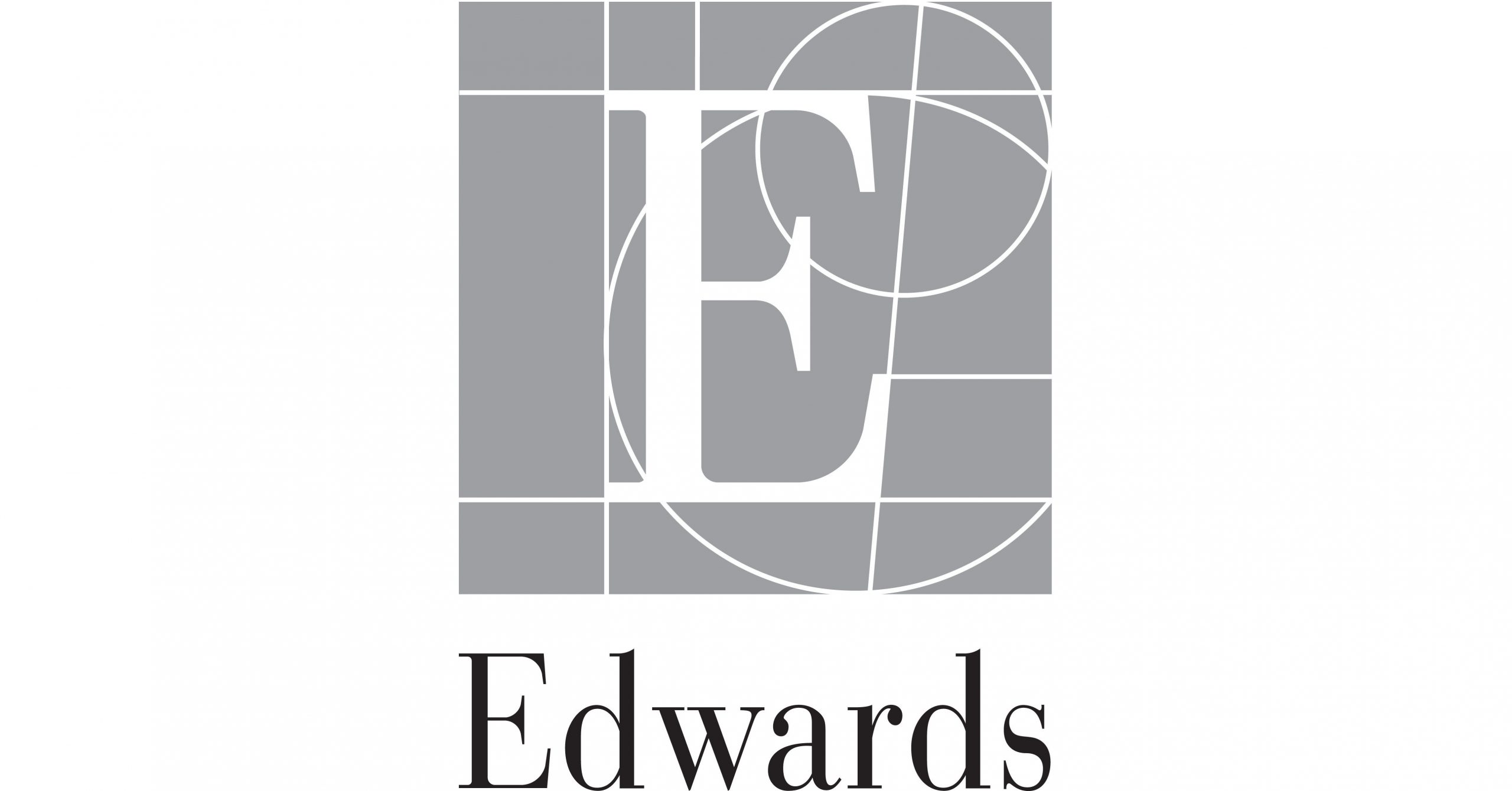CI Financial’s grand plans for U.S. expansion leave Canada behind

[ad_1]
Kurt MacAlpine, the CEO of CI Financial, in downtown Toronto on Dec. 20, 2019.Tijana Martin/The Globe and Mail
Across from the East Hotel, where Miami’s rich, young and beautiful party nightly at a rooftop bar called Sugar, CI Financial Inc. CIX-T chief executive officer Kurt MacAlpine is building the U.S. future of one of Canada’s grandest old asset managers.
On Brickell Avenue, behind a banner that says, “Developed By Visionaries, Built For Leaders,” the 57-storey building is rising, promising a white marble lobby with a 20-foot ceiling. The one-million-plus square feet of glass exterior will be “illuminated day and night by Miami Beach’s warm bay hues and nocturnal radiance,” according to building developers OKO Group.
CI is slated to take 40,000 square feet of space in the tower for the new headquarters of its fast-growing U.S. wealth management operations.
It is a business that did not even exist just three years ago. At the time, CI was a mature, even stodgy, asset manager that marketed its traditional mutual funds to Canadian retail customers. As markets rose and fell, and investors added or subtracted from their holdings, CI’s fortunes waxed and waned.
Mostly, it waned. The outflow of dollars from those funds began in 2017, when the company began to experience month after month of net redemptions, and CI’s stock price started to tumble.
Then, in 2019, CI’s board, chaired by William Holland, gave the company a jolt. In came Mr. MacAlpine, a then 38-year-old Canadian executive who’d climbed quickly in the U.S. retail funds business. Soon afterward, Mr. MacAlpine rolled out a new vision for CI: The company would begin to pivot from its legacy Canadian mutual-fund business and become a global wealth-management company, starting with the United States.

The new CI headquarters in Miami. The 57-storey building will boast a white marble lobby and one-million-plus square feet of glass exterior.Clare O’Hara/The Globe and Mail
And the growth would come at nearly any cost.
In just over two years, CI has paid $2.85-billion for more than 30 wealth management firms, nearly all in the U.S. The spending spree has left CI saddled with debt and investors questioning his vision.
Initially, shareholders were enthused, and CI stock hit a dividend-adjusted high of $29.14 in November, 2021. But as debt has grown faster than profits, CI’s shares have suffered far more than those of its rivals.
Over Mr. McAlpine’s tenure, the shares are the second-worst performer among a group of financial companies that CI itself has chosen to benchmark its executive compensation. Since Sept. 1, 2019, CI’s stock has a dividend-adjusted loss of 2.9 per cent; 22 of the 24 have returned at least 17 per cent over that time, and the median return of the group is nearly 70 per cent.
Before a rebound in recent weeks, CI stock was trading at pre-COVID-19 levels last seen in 2012.
CI declined a request for interviews with Mr. Holland and Mr. MacAlpine for this story, saying the filing of a prospectus in the United States meant it feared running afoul of that country’s disclosure laws. But the company’s numbers alone are sobering.
And now Mr. MacAlpine – who has established a residence in Miami, not far from the new U.S. headquarters – plans to split off the U.S. wealth management business as a separate company, leaving nearly $4-billion in debt on the Canadian balance sheet.
That will leave CI’s shareholders back where they started, with the company’s legacy business in Canada – and the bill for Mr. MacAlpine’s expensive U.S. vision.
Former CI Financial CEO Peter Anderson recruited his successor, Mr. MacAlpine, from WisdomTree Inc.Mark Blinch/The Globe and Mail
CI, formerly known as Canadian International, was not always stodgy.
For decades, mutual funds provided the most accessible route to professional stock selection for millions of middle-class investors looking to supplement their saving accounts or company pension plans. And, like many independent asset managers in Canada in the 1990s and early 2000s, CI boomed.
Bill Holland, Chairman of the Board of CI Financial, in July 2019.Mark Blinch/The Globe and Mail
Mr. Holland, now 63, was appointed CEO in 1999, after 10 years with CI. He aggressively began to buy out competitors. In the 2000s, he added more than a half-dozen wealth management companies, paying more than $1-billion in 2003 alone. The deals added thousands of financial advisers and a number of star portfolio managers. CI’s share price hit a record high of $36.79 in 2014.
But by 2017, the glory days of Canada’s mutual fund industry were in the rear-view mirror. As regulators required more disclosure that allowed investors to see the true fees they paid on their funds, they increasingly favoured low-cost exchange-traded funds. Tech-savvy youth gravitated toward online advice, rather than traditional advisers, when it came time to invest.
CI began to bleed assets, posting 14 consecutive quarters of net redemptions, starting in 2016, according to data by Morningstar Direct as of November 30, 2022 – meaning existing investors pulled more dollars out of CI’s funds than what was put in.
“I’m not sure that CI is necessarily the source of pride that it once was amongst Canadian investors,” Edward Jones analyst Jim Shanahan said in an interview. “I would argue it was one of the best North American asset managers six to eight years ago, and that is just not true any more.”
In 2019, Mr. Holland, who became chairman in 2017, and then-CEO Peter Anderson decided they needed to shake things up. The two set out to hire a much younger, more tech-savvy leader to take over from Mr. Anderson.
They recruited Mr. MacAlpine from WisdomTree Inc., the New York asset manager.
A native of Saint John, N.B., Mr. MacAlpine has an MBA from Queen’s University and more than a decade of experience in the rollicking and competitive U.S. markets. He ran the North American asset management practice at consulting giant McKinsey & Co. before joining WisdomTree, which creates and markets ETFs, as executive vice-president and head of global distribution in 2015.
Initially, Mr. MacAlpine told The Globe and Mail in 2019 he would relocate to Toronto, and he began to craft a list of priorities: modernize the asset management business, expand the wealth management arm and grow the company globally. A typical initiative: He invested in a machine-learning analytics tool for CI’s sales and marketing team.
But most importantly, he took a page out Mr. Holland’s playbook and, within weeks of starting, began a string of acquisitions. Early on, he snapped up WisdomTree’s Canadian ETF business – which he oversaw during his time in New York – to beef up CI’s low-cost offerings and acquired two Canadian wealth management companies.
The most aggressive part of the campaign, however, was a plan to build a U.S. wealth management business from scratch. CI acquired almost a dozen firms of U.S. registered investment advisers, or RIAs, within the first year of Mr. MacAlpine’s tenure.
The deals were done with no apparent attention to geographic concentration. They were widely scattered across the U.S. from New York, to Boston, to California. Some were in smaller cities, such as Fayetteville, Ark.
All told over the past three years, CI has spent $2.85-billion in cash, stock and estimated future payments to acquire 34 wealth management firms, all but three in the U.S. Today, about half of the $375-billion in client assets CI manages reside in its U.S. RIA business.
Unlike in Canada, where many investment advisers work for bank-affiliated firms, U.S. RIA companies typically follow an independent business model and are not part of a larger brokerage or bank. In addition, RIAs have a fiduciary obligation to act in the best interests of clients, a regulatory standard Canada has not adopted.
The U.S. RIA market has more than 17,000 companies, but has undergone a wave of consolidation in recent years as firm owners, many of them nearing retirement, look to cash in. In CI, and several other competing companies, they found eager buyers.
“People are very attracted to RIAs, which are very healthy cash-flow-generating businesses,” Rick Hough, chief executive of Silvercrest Asset Management in New York, said in an interview. “And any time that you have fragmentation, people are going to be interested in trying to roll them up and combine them into a large entity.”
To execute its plan, CI had to bid against a number of other consolidators. Companies that have acquired multiple RIA firms as part of their business model include Wealth Enhancement Group of Plymouth, Minn.; Denver, Colo.-based Mercer Advisors Inc.; Newport Beach, Calif.-based Beacon Pointe Advisors, LLC, which announced an investment from buyout giant KKR in November, 2021; and New York-based Focus Financial Partners Inc., a Nasdaq-traded company with a market capitalization of about US$2.5-billion. All declined to comment for this story.
Silvercrest’s Mr. Hough – who declined to comment on CI specifically – has not been a part of the RIA bidding war in the U.S. “Many of these businesses are not worth the price that they’re being acquired for,” he said.
In an August, 2020, investor conference call, Focus Financial CEO Rudy Adolf said his company was seeing “insane” prices paid for U.S. wealth managers and said “an international buyer” had just announced a transaction whose price “stunned” him.
“It’s more like international players, sometimes private-equity-supported players, that are – that seem to be way out of sync with typical industry multiples and in what they are doing right now,” he said.
While Mr. Adolf did not name CI, it had announced two days earlier its plan to buy Balasa Dinverno Foltz LLC of the Chicago suburb Itasca, Ill., for an undisclosed price, helping CI cross the US$10-billion mark in assets under management after just six months of buying U.S. RIAs.
Mr. MacAlpine, who was asked at the time by industry trade publication Citywire for response, declined to directly address Mr. Adolf’s criticisms, but said he was comfortable with the price CI was paying. “For every deal that we’ve done, we felt that we paid a fair price that’s reflective of the quality of the platform that we’re acquiring,” Mr. MacAlpine said. (Several months later, Mr. MacAlpine’s comment to U.S. investing weekly Barron’s was sharper: “I find it fascinating that people like to opine on the purchase prices that CI has paid for a business absent any sort of facts whatsoever.”)
Last August, after several months with little to no acquisition activity from CI, Mr. Adolf said in an investor conference call, “what we have seen last year, I may have used the word ‘drunken sailors,’ they are gone. We don’t see any activity from some of the players who just dramatically overpaid for assets that clearly were not worth it, in our estimation.”
Investors have struggled to figure out whether the assembled RIA firms will deliver for CI.
Analysts who follow CI have been keeping an eye on a measure that compares the company’s debt to its EBITDA, or earnings before interest, taxes, depreciation and amortization. The measure calculates how many years of profits it will take to pay off the debt; the smaller the ratio, the better.
In 2016 and 2017, well before the acquisition spree, CI’s debt-to-EBITDA ratio was below 1-to-1, according to S&P Global Market Intelligence. Doug Jamieson, who was then CI’s chief financial officer, told analysts “it would certainly have to be a good deal” to justify the company going above 1.5-to-1 for an acquisition. (Mr. Jamieson resigned from the company in the fall of 2020 with no immediate replacement. He did not respond to requests for comment.)

THE GLOBE AND MAIL, SOURCE: S&P GLOBAL
MARKET INTELLIGENCE

THE GLOBE AND MAIL, SOURCE: S&P GLOBAL
MARKET INTELLIGENCE

THE GLOBE AND MAIL, SOURCE: S&P GLOBAL MARKET INTELLIGENCE
Now, with CI’s long-term debt at nearly $4-billion as of Sept. 30, its debt-to-EBITDA ratio is above 3.5-to-1. The company acknowledges it had to amend its credit facility with its lender to make room for higher numbers. Last May, DBRS Morningstar Ltd. downgraded CI’s credit rating to “reflect the persistently high debt levels at the company.”
Canaccord Genuity Group Inc. research analyst Scott Chan said investors became concerned about how quickly Mr. MacAlpine’s acquisitions increased the company’s debt level.
“They had a lot of smaller deals to start and once they got bigger, they had to look at bigger deals and bigger deals cost more money,” Mr. Chan, said in an interview –while also noting that almost two-thirds of CI’s debt has low, fixed interest rates, due far in the future.
“What I don’t think the market likes is the pace of acquisitions … and a lot of people were looking at the leverage that was bought at the high end, and looking what that chunk of acquisitions looks like now. I like the strategy. I just think it was accelerated and it’s impacting the leverage ratio and market dynamics have gone against them in terms of market performance.”
In a recent news release announcing a debt refinancing, CI said it “is committed to deleveraging its business and intends to target a net leverage ratio of between 1.5x – 2.0x.”

CI Financial’s grand ambitions meet
investor skepticism
CI Financial’s share price has lagged as investors wait to see
the fruits of a U.S. acquisition spree
Nov. 7, 2019: McAlpine says
CI will begin acquiring invest-
ment-advisory businesses in
the U.S.
Sept. 1, 2019: Kurt MacAlpine
takes over as CEO
Jan. 25, 2021: CI says deal to buy Chicago firm – its biggest ever – will double U.S. wealth assets to US$46.1-billion
Nov. 11, 2021: CI says it posted record earnings and asset levels in the third quarter
Jan. 4, 2022: S&P 500 hits an all-time high of 4,818.62. Canadian stocks hit their high three months later
Aug. 11, 2022: CI announces a second consecutive quarter of declining assets. Ratio of debt to profits spike
the globe and mail, source: refinitiv eikon

CI Financial’s grand ambitions meet
investor skepticism
CI Financial’s share price has lagged as investors wait to see the fruits of a U.S. acquisition spree
Sept. 1, 2019: Kurt MacAlpine takes over as CEO
Nov. 7, 2019: McAlpine says CI will begin acquiring investment-
advisory businesses in
the U.S.
Jan. 25, 2021: CI says deal to buy Chicago firm – its biggest ever – will double U.S. wealth assets to US$46.1-bln
Nov. 11, 2021: CI says it posted record earnings and asset levels in the third quarter
Jan. 4, 2022: S&P 500 hits an all-time high of 4,818.62. Canadian stocks hit their high three months later
Aug. 11, 2022: CI announces a second consecutive quarter of declining assets. Ratio of debt to profits spike
the globe and mail, source: refinitiv eikon

CI Financial’s grand ambitions meet investor skepticism
CI Financial’s share price has lagged as investors wait to see the fruits of a U.S. acquisition spree
Sept. 1, 2019: Kurt McAlpine takes over as CEO
Nov. 7, 2019: McAlpine says
CI will begin acquiring investment-advisory
businesses in the U.S.
Jan. 25, 2021: CI says deal to
buy Chicago firm – its big
gest ever – will double U.S.
wealth assets to US$46.1-Bln
Nov. 11, 2021: CI says it posted record earnings and asset levels in the third quarter
Jan. 4, 2022: S&P 500 hits an all-time high of 4,818.62. Canadian stocks hit their high three months later
Aug. 11, 2022: CI announces a second consecutive quarter of declining assets. Ratio of debt to profits spike
the globe and mail, source: refinitiv eikon
In Mr. MacAlpine’s tenure, profits have not increased as quickly as sales. According to S&P Global Market Intelligence, in the 12 months ended last Sept. 30, CI’s revenue was $2.95-billion, up 39 per cent from the similar period in 2019.
S&P’s measure of CI’s EBITDA was $1.06-billion, up 26 per cent from 2019. But net income, the bottom-line profit measure that includes all the company’s expenses, fell 18 per cent, to $433-million. (CI prefers to emphasize an “adjusted EBITDA” measure that is an even more generous measure of profits than ordinary EBITDA.)
CI now has more than 30 RIA investment companies and subsidiaries scattered across the U.S. Each company will continue to run independently under Mr. MacAlpine’s leadership. Rolling up such a large number of RIA companies to cash in on synergies is no easy feat – especially in a market that is heavily fragmented by client base and geography.
When the strategy began in 2019, Mr. MacAlpine told CI shareholders the new U.S. companies would provide Canadian clients with significant cross-border investment opportunities.
Today, it’s unclear if CI is still pursuing that strategy. Instead, it seems the future lies in two distinct businesses – with Mr. MacAlpine focusing on the U.S. company, which is set to do an initial public offering on a U.S. stock exchange in 2023.
Records show Mr. McAlpine has registered to vote in Florida’s Dade County, using the address of a waterfront residential condo in Miami. In a recent Cafecito Talk YouTube video with Miami Mayor Francis Suarez, a tanned Mr. MacAlpine refers to the Canadian asset business of CI as the “historical part of the company.”
During the company’s third-quarter analyst earnings call in November, Mr. MacAlpine announced his plans to delist CI’s shares from the New York Stock Exchange after the U.S. wealth manager debuts, leaving CI trading only on the Toronto Stock Exchange.
Ultimately, he said, CI plans to “effectively privatize” the Canadian business via share buybacks. He did not offer a timeline for that step. He also said “the Canadian business will not fund any future U.S. acquisitions, and that business will not pursue any meaningful M&A opportunities.”
The plan for the U.S. IPO, Mr. MacAlpine said, may also include selling more than the 20 per cent of the U.S. business CI previously planned, with an eye toward reducing the pile of debt the company has accumulated in executing the shift.
Mr. MacAlpine plans to split off the U.S. wealth management business as a separate company, leaving nearly $4-billion in debt on the Canadian balance sheetTijana Martin/Handout
As if to underscore its faith in Mr. MacAlpine’s plans, CI’s board has made him one of the best-paid wealth management executives in Canada. So much so, in fact, that CI failed its advisory say-on-pay vote by shareholders in 2021 and in 2022 – the only company in Canada to flunk back-to-back.
CI paid Mr. MacAlpine $10.60-million in 2021, up more than 75 per cent from $6.01-million in 2020. His annual cash bonus jumped to $3.88-million from $1-million in the previous year, while his share awards rose to nearly $5.6-million from $4.2-million. His annual base salary increased to $1,125,000 – up 40.6 per cent from 2020′s $800,000.
Among the disclosed pay packages of top executives of Canadian wealth managers, Mr. MacAlpine’s pay package is the second-highest, behind Canaccord Genuity CEO Dan Daviau. Compensation packages for the CEOs of Canada’s five biggest banks, each multiple times the size of CI, ranged from $12-million to $17-million in 2021.
Institutional Shareholder Services Inc. (ISS) and Glass Lewis & Co. – which advise institutional investors on how to vote their shares – each recommended shareholders vote “no” in CI’s say-on-pay ballot in 2021 and 2022, due to a range of concerns about the company’s compensation plans and Mr. MacAlpine’s large package.
The advisers’ concerns included a lack of performance-based, long-term stock awards for executives other than Mr. MacAlpine, incentive payments based on annual performance, not long-term factors, too much discretion involved in determining bonuses and internal pay inequity, with Mr. MacAlpine making much more than other CI executives.
CI received just 38.1 per cent of the votes cast in its 2021 say-on-pay vote, and 45 per cent support in 2022. The average Canadian company got more than 90-per-cent support in each year, according to data from Kingsdale Advisors.
Part of the reason for the growth in Mr. MacAlpine’s pay package is the board’s decision to compare it to much bigger financial institutions. CI told shareholders that “the profile and size of the corporation shifted significantly in 2021 given the growth of the wealth management business and the significant expansion into the U.S.,” so it decided to change the peer group it used as benchmarks to set a competitive pay level.
Out went Canadian companies Canaccord Genuity, Fiera Capital Corp., Guardian Capital Group Ltd. and Sprott Inc.; and in came U.S. market giants Morgan Stanley and Charles Schwab Corp., which, at the end of 2020, were 40 to 50 times more valuable than CI, by market capitalization. The addition of those giants allowed CI to push up the pay benchmark for Mr. MacAlpine.
Shareholders aren’t the only ones dissatisfied. Shortly after Mr. MacAlpine announced his new vision, CI began to see a flurry of departures by executives and other high-level staff.
Along with Mr. Jamieson – who was eventually replaced by former WisdomTree executive Amit Muni in May, 2021 – CI’s head of marketing and president of CI subsidiary First Asset ETFs, Rohit Mehta, left in early 2020. Several months later, CI’s global asset management chief investment officer, Eric Bushell, announced his retirement, along with star portfolio manager Robert Lyons.
Some of the departures coincided with CI retiring certain investment brands, including many of the popular fund names Mr. Holland had successfully acquired years earlier. In April, 2021, 156 investment funds were switched to the CI brand, removing any reference to boutique brands affiliated with Cambridge Global Asset Management, Harbour Advisors, Sentry Investment Management and Signature Global Asset Management.
Part of the rebranding had multiple investment teams merge into single ones – a move that research analysts predicted would cause “growing pains” for certain individuals who were accustomed to running their own show.
“This will especially be present among the chief investment officers and senior portfolio managers….. they may chafe against their fewer and, in some cases, narrower mandates. It would not be surprising to see an increase in key personnel turnover over the next couple of years,” Sun Life Financial Inc.’s retirement group wrote in a research note.
At the same time, large groups of fund wholesalers, investment sales managers and senior vice-presidents either departed CI or were let go. More recently, an entire team of 13 portfolio managers and equity analysts jumped ship to join BMO Asset Management, including prominent portfolio managers Malcolm White, John Hadwen, Jeff Elliott, Massimo Bonansinga and Jeremy Yeung. It was an unprecedented move for CI.
When asked by analysts about the departure of the large investment team, CFO Mr. Muni said the impact was minimal as the individuals managed less than 1 per cent of CI’s assets. But the departure highlighted a significant shift in corporate culture at CI in which portfolio managers – many of them star managers who had built CI’s signature investments – were now walking out the door.
“We’ve been hiring all along … so this was not a series of, call it, departures and then a need to backfill,” Mr. Muni said during a quarterly earnings call. “We have been retooling the investment platform all along. I feel great about the construct, the quality of the individuals and how we’re weighing in.”
When the new U.S. office opens this year, Mr. MacAlpine will need to woo a new team to help cultivate his vision for the future. Despite CI’s explosive growth in assets under management over the past two years, its success will come down to its ability to keep the U.S assets from walking out the door – which include individual financial advisers and clients at each RIA firm.
Mr. MacAlpine may want to heed his own advice.
“You could have a great business, you could agree with the strategy,” he said during a 2022 interview with Barron’s. “But if people don’t want to work with you, it’s probably not going to work out.”
With files from Stephanie Chambers
[ad_2]
Source link







